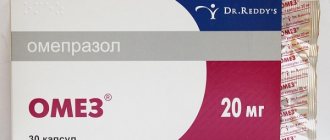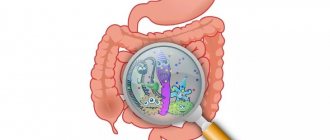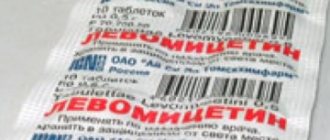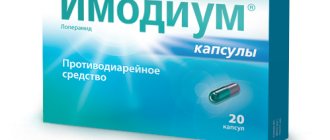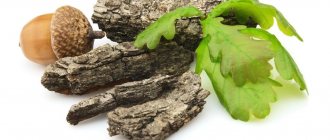Loose stools and vomiting are the most common symptoms of food poisoning in a child.. But parents should not be so careless when self-medicating at home. After all, these signs may indicate the development of completely different diseases, and without a correct diagnosis, the effectiveness of the therapy will be zero. And what kind of detoxification can there be with the help of activated carbon when it comes to meningitis or salmonellosis. So all parents need to have an idea of what causes intestinal disorders. And in what cases does vomiting and diarrhea in a child require qualified medical care?
Intestinal infection
Having heard about an intestinal infection, I think you will object to me and say: “What about without fever?!”, and you will be almost right. But there are still cases when it is not there. Only vomiting with or without diarrhea.
This mainly occurs in children with diseases of the immune system. There are few of them, but in childhood, intestinal infections are a very frequent visitor. So let's not forget about them.
During illness, do not forget about your diet. Avoid raw vegetables and fruits, dairy products, fried and fatty foods. Meals are small and frequent. Unsolder the child. If you are vomiting, do not give too much at once. Better to take a sip every five minutes.
Food poisoning
It can be obtained as a result of eating poor quality food. The more of them a child eats, the worse his health feels. The stomach, trying to protect the body, tries to get rid of all this. And what has managed to get further triggers the mechanism of accelerating peristalsis, which is manifested by diarrhea.
The duration of the disease depends on the amount of food, the child’s body and the adequacy of treatment. The main treatment is sorbents (activated carbon, Smecta, etc.), drinking plenty of fluids and limiting food intake.
If a child is poisoned by drugs, the above symptoms are accompanied by signs of an overdose of this drug. In this case, immediate hospitalization is indicated.
How Smecta should be used correctly for children and how this popular drug is useful, says a pediatrician.
How to treat diarrhea in a child
Proper nutrition
Adjust the diet - exclude fresh juices, as well as foods that can independently cause loose stools in children.
Exclude foods that stimulate peristalsis - fresh fruits, vegetables, cabbage in any form, wholemeal bread. Do not give fermented milk products!
Add gluten-containing foods to your baby’s diet – rice in the form of a ready-made dish or decoction, potatoes.
Give more bananas, applesauce, crackers, and weak broth.
If a baby has diarrhea, it is recommended to switch to lactose-free formulas.
Drugs
Use rehydrants – Rehydron: restores fluid loss and normalizes water-salt balance. Simply drinking plenty of fluids will not help, because the body will continue to excrete fluid.
Give salted water - 50 ml after each bowel movement. If your child already drinks on his own, he should not be restricted.
Drugs that normalize intestinal flora - biological products. They contain normal intestinal flora and promote its proliferation in the intestines. This is Bifidumbacterin, containing live bifidobacteria.
A completely safe drug with no contraindications. A good method is a combination of drugs with bifidobacteria and lactobacilli.
“Acipol-Baby” drops are a complex probiotic used from the first months of life. The active substances in its composition increase the active functions of the body and help in the digestion and absorption of food. They also inhibit pathogenic organisms and normalize the balance of flora in the intestines.
Available in a very convenient form, you can add no more than 37 C to any food or mixture. The daily dose is 5 drops of suspension. One pharmaceutical bottle is required per course of treatment.
"Acipol-Baby" does not contain lactose! Used for diarrhea caused by taking antibiotics. The only contraindication is individual intolerance to the drug.
To reduce acid in the stomach - gastric juice and stimulants for its production; for pancreatitis and liver failure, enzyme preparations Festal and Pancreatin.
You can give enterosorbents - Smecta: contains a natural active substance that binds toxins. It has a pleasant taste, does not injure the mucous membrane, absorbs and removes toxic substances.
Linux for children.
Enterosgel is a molecular sponge that absorbs toxins. Unlike Smecta and activated carbon, it does not absorb minerals, vitamins and other valuable substances. Release form: white paste. The dose is calculated based on the child's weight.
Activated carbon. To prevent hard particles of coal from damaging the mucous membrane, crush the coal to a powder consistency and dilute it in water at the rate of 1 tablet of coal per 15 kg of weight.
Antibacterial drugs - Levomycetin, Furazolidone.
Inflammatory processes in the gastrointestinal tract
The most famous - and you all know it - is gastritis. Now almost every schoolchild suffers from it. But besides it, there are peptic ulcers of the stomach or duodenum, duodenitis (inflammation of the mucous membrane of the duodenum), pancreatitis (inflammation of the pancreas), cholecystitis (inflammation of the gallbladder).
They manifest themselves not only with vomiting and diarrhea, but also with abdominal pain. Moreover, at the beginning of the disease it brings more suffering and depends on the location of the affected organ and the severity of the disease.
If mom or dad has the above diseases, the child is automatically at risk (the so-called hereditary predisposition).
Treatment is prescribed after examination and diagnosis. Diet plays a key role in this. The meals are fractional, gentle, with the exception of dishes that irritate the mucous membrane (fried, smoked, salted, overly seasoned).
Treatment
If a child has vomiting and diarrhea without fever, treatment directly depends on the cause:
- food poisoning – Polysorb, activated carbon, Bifidumbacterin;
- intestinal infections – Nifuroxazide, Enterosgel, Prema Kids;
- inflammatory processes - medications depend on the cause, for bacterial etiology antibiotics are prescribed, for parasitic etiology - anthelmintics;
- allergies – Suprastin, activated carbon;
- overeating, indigestion - normalization of diet, Pancreatin;
- parasites – Piperazine, Mebendazole or other anthelmintics, determined by the doctor based on test results, additionally Prema or Bifidumbacterin;
- dysbacteriosis – yogurt in tablets, Prema Kids.
In case of psychogenic disorders, you need to protect the child from strong emotions and contact a neurologist, as in the case of diseases of the central nervous system. Pyloric stenosis and spasms require prior consultation with a doctor and diagnosis in order to select the appropriate treatment.
To prevent dehydration, give Regidron or Gidrovit - they restore water and electrolyte balance. The child should drink clean water in large quantities.
Nutrition for diarrhea and vomiting in a child without fever
To prevent indigestion, vomiting and other gastrointestinal disorders, you need to follow these dietary rules:
- divided doses 3-5 times a day;
- daily first course - soups or broths;
- fibrous cereals and fiber-rich foods must be included in the diet;
- fruits and vegetables, the simplest ones are apples, cabbage salads;
- avoid large portions and overeating;
- avoid long periods of fasting;
- Avoid eating fast food.
If there is such a possibility, it is better to immediately consult a doctor or call a pediatrician at home so that he can accurately determine the cause and prescribe what to treat. Many conditions that are accompanied by vomiting and diarrhea without fever in children are similar in other symptoms and can only be distinguished by a specialist. If you have symptoms of emergency conditions, you should not delay calling an ambulance so as not to endanger the child’s health.
Author: Vladislava Matveeva, doctor, especially for Mama66
Overeating, indigestion, disturbances in the introduction of complementary foods
They are mainly characterized by single or double vomiting of food eaten the day before. The reason is that the food turned out to be inadequate either in volume (excessive) or in its composition (for example, too fatty).
The pediatrician explains in as much detail as possible how to properly introduce complementary foods and how to prevent digestive problems.
Read about how to introduce vegetable puree into a child’s diet to avoid various negative consequences in the material from a pediatrician.
General health suffers more in children under one year of age.
Be sure to follow the rules for introducing complementary foods. It should start no earlier than six months of age. The first product is porridge or vegetable puree. The initial volume is half a teaspoon. Give in the morning when the baby is in good health. Gradually increase the volume, take your time with a variety of products. Observe your reaction to new foods.
What to do if children are dehydrated
Dehydration is a lack of water in the body. There are several degrees of dehydration - from moderate to complete. When dehydrated, it is important to replenish the lack of not only water, but also vital salts and minerals.
The main causes of dehydration are diarrhea and vomiting. With diarrhea, stool becomes frequent and loose, but in the absence of diarrhea, the baby may not have stool at all. Other causes include excessive sweating and urination. At elevated temperatures, the body also loses moisture through skin evaporation.
Children on breastfeeding are less likely to suffer from dehydration; Remember that you can and should breastfeed while you are sick.
Does your baby pee often enough? (You should start to worry if you haven't changed a single diaper in 6 hours or have changed less than 8 diapers in 24 hours.)
Signs of dehydration in a baby:
- Very dry lips and mouth.
- Sunken eyes and fontanelle (soft area on the head).
- Dizziness.
- Lethargy.
- Dry, wrinkled or too loose skin.
- The baby pees less and less often.
- The baby cries almost without tears.
- Fever.
- Weight loss.
Advertising
When to see a doctor
- If your baby has all of the above symptoms, but is too sleepy or overly excited.
- He continues to vomit or have diarrhea and cannot drink water.
- Treatment at home does not help.
- The baby begins to become dehydrated due to diabetes.
Treatment of dehydration
Breastfeed and formula feed your baby more often than usual, offer more fluids (ready-made electrolyte solutions are better). If your newborn is vomiting, give him a teaspoon (5 ml) as often as possible and gradually increase the volume of liquid. Do not offer your baby medicine immediately after a bout of vomiting; let him rest. The child must replenish the fluid that he loses during diarrhea or vomiting. The total volume depends on its weight.
| Weight | Approximate volume of solution |
| 2.7–4.5 kg | 470 ml/day |
| 5–10 kg | 680 ml/day |
| 10.5–11.8 kg | 1200 ml/day |
The most effective way to prevent the spread of viral infections is to wash your hands regularly and frequently.
Metabolic disorders
They are mainly hereditary in nature. They consist in the fact that the body does not produce certain enzymes or hormones, which is why not only the digestion process itself suffers, but also other organs that are poisoned by the products of altered metabolism. This group of diseases includes celiac disease, cystic fibrosis, maple syrup disease and others.
These diseases appear in infancy. The possibility of a favorable outcome is high only with early diagnosis and treatment.
Paracetamol for diarrhea and fever
Young parents often panic when their child’s temperature rises, diarrhea and vomiting begin. They use the usual antipyretic and painkillers based on paracetamol. These are “Cefekon”, “TeraFlu”, “Paracetamol for children”. If a child needs urgent help and there are no other medications at hand, similar medications can be used. They will not directly affect diarrhea, but will help lower the temperature.
If the condition is caused by poisoning, then paracetamol-based drugs may worsen the condition. They are very toxic to the liver, and as a result, the child can be “treated” to toxic hepatitis. That is why it is important to first try to at least independently diagnose and roughly understand what kind of process is happening in the child’s body.
Food allergies
The reason for this is intolerance to certain foods, which is caused by immunological reactions in the body. The most common products are cow's milk, nuts, fish, eggs, and crustaceans.
We are accustomed to the fact that this disease manifests itself mainly on the skin in the form of a typical allergic rash, but the gastrointestinal tract suffers even more, because it is also one of the immune organs.
The disease begins to show itself before the age of one year. The child is bothered by vomiting and diarrhea, abdominal pain, childhood eczema, atopic dermatitis, and often allergic rhinitis.
In older children, the disease becomes chronic; adenoiditis and chronic tonsillitis can form.
Treatment consists of a strict diet and taking antihistamines.
Causes and symptoms
Diarrhea and vomiting, not accompanied by fever, are characteristic of many acute conditions of the stomach and intestines. To correctly determine the cause, you need to pay attention to additional symptoms characteristic of each individual condition.
Poisoning
Symptoms of food poisoning may not appear immediately. It is caused by products whose storage conditions are violated. Often the cause of poisoning with diarrhea and vomiting, but without fever, is the consumption of mushrooms - even edible mushrooms take a long time to digest and are difficult for children’s digestive tract.
Signs of poisoning:
- strong thirst;
- profuse sweating;
- weakness;
- pallor;
- nausea that is relieved by vomiting;
- dry mouth.
With botulism, in addition to the described symptoms, vision deteriorates, there is double vision, the pupils react poorly to light, the gait is unsteady, and the temperature remains within normal limits. Botulism can be caused by canned beans, spinach, beets, mushrooms, tuna, smoked fish, and ham.
Intestinal infections
With an intestinal infection, the temperature can still rise, but only slightly, up to 37 ° C in the initial stages. The child refuses to eat, is capricious, lethargic and pale. Cold sweat appears on the forehead. Vomiting does not relieve nausea.
Additionally, the child complains of pain in the stomach, and blood is found in the stool. Small blood impurities should already alert parents, and darkening of the stool indicates the onset of an acute phase and emergency condition.
Inflammatory processes in the gastrointestinal tract
Inflammation is not an independent process; it always has a cause. Usually it is not the entire intestine that is affected, but one of its sections. Factors that can cause inflammatory gastrointestinal diseases in a child:
- infectious diseases;
- helminthiasis;
- abuse of antibiotics and other drugs;
- autoimmune diseases;
- regular unhealthy diet;
- poisoning by toxins, for example, poisonous mushrooms;
- overweight;
- physical inactivity.
Overeating after long periods of hunger, a lot of fatty foods, fried and smoked foods in the diet - all this leads to gastrointestinal disorders to varying degrees.
Inflammation of the mucous membranes of the small intestine is accompanied by the following symptoms:
- diarrhea after eating up to ten times a day;
- a lot of undigested particles in the stool;
- nagging pain in the navel and right hypochondrium;
- weight loss;
- weakness;
- dry skin;
- brittle nails.
The latter phenomena are typical if the enteritis was chronic - nutrients are simply not absorbed in the small intestine if the mucous membrane is inflamed. Diarrhea in a child may accompany sluggish enteritis, but if the disease worsens, the temperature will certainly rise.
Colitis is an inflammation of the mucous membranes of the large intestine. The chronic form can last for months and make itself felt with dull aching pain in the lower abdomen. There is no dependence on food intake, as with enteritis. Additional symptoms that may indicate the development of colitis:
- refusal to eat;
- nausea;
- bloating, flatulence;
- diarrhea, which is replaced by constipation;
- lack of temperature;
- small volume of feces.
During an exacerbation, the child’s temperature will rise, acute abdominal pain will begin, and a false urge to have a bowel movement will begin.
Allergy
Diarrhea and vomiting without fever also appear with food allergies, but are supplemented by a number of symptoms that may indicate product intolerance:
- skin redness;
- itching, rash, swelling;
- sneezing, coughing;
- runny nose, difficulty breathing;
- swelling of the tongue, lips;
- nausea, intestinal colic;
- moodiness, refusal to eat;
- decrease in blood pressure.
By difficulty breathing we mean wheezing, heavy breathing in a child, as with bronchitis. This is due to bronchial spasm that accompanies an acute immune reaction. Food allergies are most often caused by fish, seafood, nuts, citrus fruits and strawberries, confectionery and chocolate.
Overeating and indigestion
If a child does not take any food for a long time, and then eats large portions, chewing poorly, indigestion develops. It is also characteristic of an excess of fatty, smoked foods, sweet, spicy, pickled foods, mushrooms, and spices.
Overeating also occurs when eating quickly and chewing poorly. The feeling of fullness is not felt immediately, and the child continues to eat until he feels heaviness. Diarrhea and vomiting without fever can also develop if the child tries unusual food, for example, on vacation. At the same time, vomiting significantly relieves nausea.
Parasites
Photo from todayinform.ru
Helminthiasis manifests itself in different ways, depending on what kind of parasites we are talking about. But there are general signs by which it can be determined that diarrhea and vomiting in a child without fever is caused by helminths:
- increased appetite, but body weight does not increase;
- severe drooling;
- flatulence, nausea, pain on palpation of the abdomen, cramps;
- tendency to allergies to foods that were previously well tolerated;
- irritability, anxiety, poor sleep;
- splitting of nails, hair loss;
- frequent exacerbation of sinusitis, pharyngitis, sinusitis and other inflammatory processes in the nasopharynx.
Girls experience redness and irritation of the skin in the vagina and anus. Helminths interfere with the absorption of vitamins and nutrients, so the child rapidly develops vitamin deficiency and loses weight, although he wants to eat more.
The first symptoms are noticeable 2-3 weeks after the eggs enter the body. Pinworms can cause nighttime itching in the anus; the child constantly scratches the anus. Toxocara additionally causes a cough without other symptoms of a cold.
Pylorospasm and pyloric stenosis
Between the stomach and duodenum there is a pyloric sphincter - a kind of muscle that separates the two sections of the gastrointestinal tract. The spasm of this sphincter is called pylorospasm and because of it, food does not completely pass from the stomach to the intestines. As a result, vomiting and diarrhea develop, but the child's body temperature remains normal.
Pyloric stenosis is a more complex condition; food from the stomach does not reach the intestines at all. Symptoms of pyloric stenosis:
- vomiting in large volumes;
- normal body temperature;
- constant hunger;
- constant thirst, in infants – anxiety, tearfulness, restless sleep;
- constipation alternating with diarrhea;
- little or no weight gain.
In young children with pyloric stenosis, retraction of the fontanelle is observed.
Central nervous system diseases
Diarrhea and vomiting without fever can be caused by diseases of the nervous system such as ischemia, hydrocephalus of newborns, increased intracranial pressure, and tumors.
Vomiting does not bring relief and is in no way related to food intake. Accompanied by severe headache. In children under 6 months, the fontanel bulges, the child is weak, drowsy, and dizzy.
Intestinal obstruction
Intestinal obstruction in a child appears against the background of parasitic infection, cysts or tumors, and decreased peristalsis. Symptoms:
- vomit;
- gas retention;
- sharp pain;
- bloating;
- false urge to defecate.
Body temperature may remain within normal limits. The condition requires emergency care, as serious complications can develop, including peritonitis. Partial obstruction due to poor nutrition is accompanied by diarrhea rather than vomiting. If nutritional adjustments do not help, you need to seek help.
Acute appendicitis
At first, this emergency condition may also be accompanied by vomiting and diarrhea without fever. But this is only the first sign; the child’s condition will worsen. After a few hours, the temperature will still rise. Moreover, even light touches to the stomach bring severe pain. You cannot give medications to a child in this condition.
Dysbacteriosis
This is a condition in which the intestinal microflora in a child changes qualitatively or quantitatively. Vomiting is infrequent, no more than once or twice a day. Constipation gives way to foamy diarrhea, and the temperature does not rise. The child's appetite is poor, there are abdominal pains, rumbling after eating, and a whitish coating on the tongue. Redness on the skin is possible. A rash, itching, and dryness appear.
Intestinal parasitoses
This is a large group of diseases that is caused by helminths and protozoa. The most common are ascariasis, enterobiasis, trichocephalosis, and giardiasis. Diagnosed by stool examination.
Parents may be alerted to the child’s poor appetite, restless sleep, abdominal pain, nausea and vomiting, diarrhea, and itching in the perianal area.
To prevent helminthiasis, a single dose of an antiparasitic drug is recommended twice a year.
How does it manifest?
Before vomiting, the child usually experiences nausea, weakness, chills, and pallor. The muscles of the stomach, diaphragm and abdominal wall contract, causing the contents of the upper digestive tract to be expelled through the mouth (and sometimes through the nose).
The appearance of diarrhea is indicated by the release of liquid feces, which may be watery and contain various impurities. The child also has a frequent urge to go to the toilet. The more often vomiting occurs and the more times the baby defecates, the faster the child weakens and the risk of dehydration increases.
Pylorospasm and pyloric stenosis
These conditions are typical exclusively for very young children.
Pylorospasm is a muscular contraction of the transition zone between the stomach and duodenum.
Manifested by vomiting or excessive regurgitation after eating. This mainly affects premature or easily excitable babies. The use of an antireflux mixture helps to cope with this problem.
The doctor may also prescribe antispasmodics and baths with chamomile or valerian. By four months, the tone of the pylorus is normalized.
But there are cases when the cause of vomiting is not a spasm, but stenosis (narrowing) of this section. This cannot be treated with formula or baths and will not go away with time.
Everything is much more serious here. Vomiting profusely, like a fountain. The chair is hungry. The baby is rapidly losing weight. If such symptoms are present, an x-ray examination is performed to confirm the diagnosis. Treatment is only surgical.
Diseases of the central nervous system
It is no secret that the center of vomiting is located in the brain. Therefore, when it is affected, vomiting is a common symptom. In newborns, this may be due to birth trauma, asphyxia or hydrocephalus. In older children - with tumors, meningitis, epilepsy.
But most importantly: vomiting is one of the first symptoms of traumatic brain injury.
When it comes to seeking medical help from pediatric traumatologists, suspicion of a concussion ranks first.
Intestinal obstruction
Or rather, its variety is intussusception. Occurs in newborns, children under one year of age and older. Most often occurs during the introduction of complementary foods.
In case of gross violation of the rules of its administration, when an unusually large volume of food is given, the intestines have to increase peristalsis.
Often, due to impaired motility, one section of the intestine penetrates into the lumen of another (invaginates). After which intestinal obstruction occurs. The child is pale, moans and screams from cramping pain in the abdomen.
Vomiting is profuse, with a stagnant odor. Stool streaked with blood in the form of raspberry jelly.
With such symptoms, urgent hospitalization is indicated. Treatment is mainly surgical.
More detailed information about how intestinal obstruction occurs in children and how to recognize it is in the material from the pediatrician.
Dysbacteriosis
This is not an independent disease, but a clinical and laboratory syndrome. The causes include poor nutrition, diseases of the gastrointestinal tract, long-term antibiotic therapy, and weakened immunity due to long-term illnesses.
At the same time, the balance of the intestinal microflora is disrupted, which leads to distortion of the processes of digestion and absorption of substances, and depletion of the body.
Treatment consists of normalizing the flora with special preparations (eubiotics, prebiotics, probiotics). In each specific case, the choice of drug rests with the doctor.
Read a detailed and most informative article by a pediatrician about what dysbiosis is in infants and how to alleviate this condition.
Psychogenic vomiting and bear sickness
Here the reason is purely functional and it is located in the head. This kind of disorder occurs in children from preschool age as a reaction to excessive excitement and fear. The body expresses its protest and rejection.
Often it is enough to establish contact between parents and child. In advanced situations, consultation with a psychotherapist is required.
Of course, these are only the most common diseases, disorders and conditions. The world of symptoms is diverse. And each of them is important in the overall picture of the disease. Therefore, if signs that worry you appear, do not delay diagnosis until later, consult a doctor.
Be healthy!
